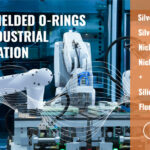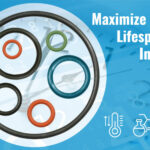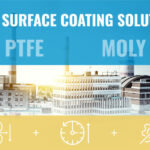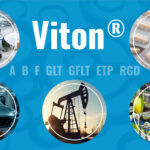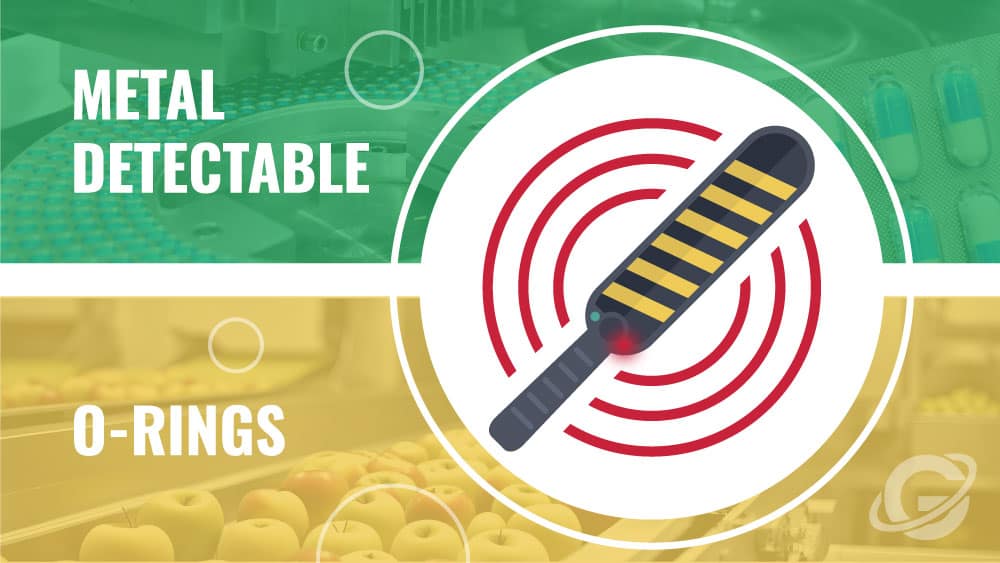
Summary
- Metal detectable o-rings serve as critical components in industries like food, beverage, and pharmaceuticals, enabling swift detection and addressing of o-ring failure, thereby preventing potential contamination.
- Depending on industry-specific conditions, these o-rings are made from various materials, such as Nitrile, Viton®, Silicone, and EPDM, and find diverse applications across sectors.
- The selection process for metal detectable o-rings entails understanding the operating environment, proper fitting, and material compatibility, and requires correct installation, regular maintenance, and expert guidance from suppliers.
Introduction
Traditional o-rings, while effective, are subject to degradation and failure over time due to their constant exposure to extreme temperatures, continuous vibration, and corrosive chemicals. Such degradation can have serious implications. When rubber fragments from seals and gaskets shear off, they can migrate through systems to contaminate the product stream. If an o-ring disintegrates during production, operators must often shut down equipment to locate and eliminate contaminants. This results in unplanned downtime, lost production, and potentially compromised safety. To mitigate these implications, metal detectable o-rings better serve certain o-ring use cases.
This blog will discuss the significant role of metal detectable o-rings, the different types and their applications, the regulatory frameworks guiding their use, and their selection and application considerations.
The Importance of Metal Detectable O-Rings
Metal detectable o-rings are a vital safeguard for industries dealing with consumable products. Their design allows fragments, even as small as 2mm, to be identified by metal detecting or X-ray equipment. This proactive approach allows for swift identification and removal of the fragments, preventing potential contamination of the product stream.
The implications of using metal detectable o-rings extend beyond product safety. By preventing product contamination, these o-rings substantially reduce the likelihood of expensive product recalls, which can be financially devastating and damage a company’s reputation. They also enable more efficient production. Swiftly identifying and addressing o-ring failure reduces downtime, ensuring production lines keep running and schedules are maintained.
In addition, metal detectable o-rings have become a crucial part of quality assurance processes. The ability to detect and remove o-ring fragments helps to ensure consistent product quality. Moreover, using these o-rings allows companies to adhere to FDA regulations, signifying their commitment to maintaining the highest safety and quality standards.
Application In the Food and Beverage Industry

The food and beverage industry must adhere to rigorous safety standards and quality control measures. Food products often pass through processing, mixing, and packaging stages, each with a distinct set of temperature, pressure, and cleanliness requirements. With each of these stages, the potential for contamination increases. In this context, metal detectable o-rings are pivotal in ensuring product safety and integrity.
Mechanical components in food and beverage processing equipment, such as pumps, valves, and fillers, are often sealed with o-rings. Continuous wear and tear can cause these o-rings to degrade and fail, potentially contaminating the product stream with rubber fragments. Metal detectable o-rings address this concern, as they can be swiftly detected and removed, thus averting potential contamination and costly product recalls.
In terms of application, the food and beverage industry utilizes metal detectable o-rings in virtually all stages of production – from raw material processing to packaging. For instance, in dairy processing, these o-rings may be used in pasteurization equipment, where their resilience to high temperatures ensures both seal integrity and product safety. In beverage bottling operations, they may prevent contamination of drinks in filling machines.
Moreover, Clean-in-Place (CIP) systems employ these o-rings for cleaning the interior surfaces of pipes, vessels, equipment, and related fittings without disassembly. These systems use harsh chemicals and high temperatures, so the o-rings must resist these conditions. Metal detectable o-rings, with their wide range of material options, offer the required resilience while ensuring detectability.
Application In the Medical and Pharmaceutical Sector
Like the food and beverage industry, the medical and pharmaceutical industry demands high safety standards, cleanliness, and quality control. The implications of product contamination in this sector can be life-threatening. Adopting metal detectable o-rings in this sector can greatly enhance the safety and reliability of pharmaceutical and medical products.
These industries often use sophisticated equipment to produce drugs, vaccines, and other medical products. This equipment, sealed with o-rings, is subjected to regular sterilization processes involving high temperatures and harsh chemicals. Common o-rings can fail under these extreme conditions, potentially leading to rubber fragments contaminating the product. Due to their design and material properties, metal detectable o-rings can withstand these harsh conditions while swiftly detecting and addressing any failure.
Metal detectable o-rings find extensive application in pharmaceutical processing equipment such as autoclaves, bioreactors, and sterile filtration units. For instance, autoclaves, used for sterilization, often operate under high pressures and temperatures. Metal detectable o-rings used in these systems not only have to endure these conditions but also need to maintain their detectability.
Similarly, bioreactors, devices for growing organisms like bacteria and yeast under controlled conditions for pharmaceutical production, also benefit from these o-rings. Their use in these reactors ensures that seal failure doesn’t lead to contamination of the cultured organisms. Furthermore, filtration units that purify drugs and remove particulate matter also utilize metal detectable o-rings to prevent rubber contamination.
These examples demonstrate metal detectable o-rings’ substantial role in ensuring safety and quality in the food and beverage and medical and pharmaceutical industries. Their adoption significantly mitigates the risk of product contamination, proving their worth in these critical sectors.
Different Types of Metal Detectable O-Ring Materials

Nitrile O-Rings: With excellent oil resistance, Nitrile o-rings are a go-to choice in the automotive industry. Metal detectable Nitrile o-rings serve as robust sealing solutions in fuel and oil handling systems, reducing the risk of contamination in case of seal failure.
Viton® O-Rings: Viton® o-rings are highly resistant to high temperatures and chemicals. In industries such as petrochemical or aerospace, where conditions can be severe, metal detectable Viton® o-rings are utilized to ensure system integrity and safety.
Silicone O-Rings: With superior flexibility and heat resistance, silicone o-rings are common in food and beverage processing equipment. As metal detectable silicone o-rings, they prevent contamination of food and drink products in the event of seal failure.
EPDM O-Rings: EPDM o-rings are renowned for their resistance to UV radiation and ozone, making them ideal for outdoor applications such as water treatment systems. Their metal-detectable versions maintain the same properties while adding a critical layer of safety.
The Interplay between HACCP, FDA Compliance, and Metal Detectable O-Rings
Hazard Analysis Critical Control Point (HACCP) programs and FDA regulations are crucial in shaping the need and application of metal detectable o-rings. These comprehensive programs and regulations mandate that all components that come into direct contact with product streams must be detectable by metal and X-ray equipment. Metal Detectable o-rings designed with these requirements are a perfect fit for industries adhering to HACCP programs and FDA regulations.
These o-rings not only meet these stringent guidelines but also help bolster the overall safety protocols of a company. Safety and quality are paramount in industries like food and beverage, pharmaceuticals, and more. Failing to detect and address contaminants can lead to serious health risks. Metal detectable o-rings significantly mitigate these risks, emphasizing a company’s commitment to safety and compliance.
Navigating the Selection and Application of Metal Detectable O-Rings
Understanding the Operating Environment: The selection process begins with a thorough understanding of the operating environment, which includes factors such as temperature, pressure, and the type of media to which the o-ring will be exposed. For instance, if the application involves exposure to high temperatures or aggressive chemicals, a metal detectable Viton® o-ring might be more suitable due to its resistance to these conditions.
Size and Fit: The size and fit of the o-ring are essential to ensuring proper sealing performance. The o-ring should fit snugly within its groove, providing an adequate seal without being subject to excessive stress that could cause premature failure.
Material Compatibility: The compatibility of the o-ring material with system fluids is crucial. If incompatible, the material could degrade, leading to seal failure. Therefore, understanding the chemical compatibility of the o-ring material with the application’s media is paramount.
Proper Installation: Correct installation is essential to prevent damaging the o-ring and compromising the seal. O-Rings should be carefully installed into their grooves, ensuring they are not twisted or pinched. Lubrication may be necessary to facilitate installation and improve seal performance.
Maintenance and Inspection: Regular inspections of the o-rings for signs of wear, damage, or aging can help detect issues early and prevent seal failure. A maintenance schedule should be established based on the application’s criticality and the o-ring’s expected life.
Guidance from Suppliers: O-Ring suppliers and manufacturers can advise on the best selection for a specific application. They have extensive knowledge about the performance of different o-ring materials in various environments and can offer recommendations based on this expertise.
Selecting and applying metal detectable o-rings involves an in-depth understanding of the application, the operating environment, and the o-ring materials. Choosing the right o-ring can help ensure system integrity, product safety, and overall operational efficiency.
Conclusion
It’s clear to see the pivotal role that metal detectable o-rings play in various industries. With multiple materials catering to diverse needs, these o-rings have proven their worth. The adherence to HACCP guidelines and their impact on food safety standards cannot be overstated.
The selection and application of metal detectable o-rings will continue to be refined, with innovations promising to enhance performance and safety. Here at Global O-Ring and Seal, we remain at the forefront of providing high-quality, metal-detectable solutions.
For more information or to request a quote, please don’t hesitate to contact us at 832-225-4602. Explore the world of o-rings with Global O-Ring and Seal – your trusted partner in sealing solutions.

 English
English  Español
Español  Français
Français  Português
Português  Deutsch
Deutsch  Italiano
Italiano  Русский
Русский  中文
中文  日本語
日本語  العربية
العربية  हिन्दी
हिन्दी 